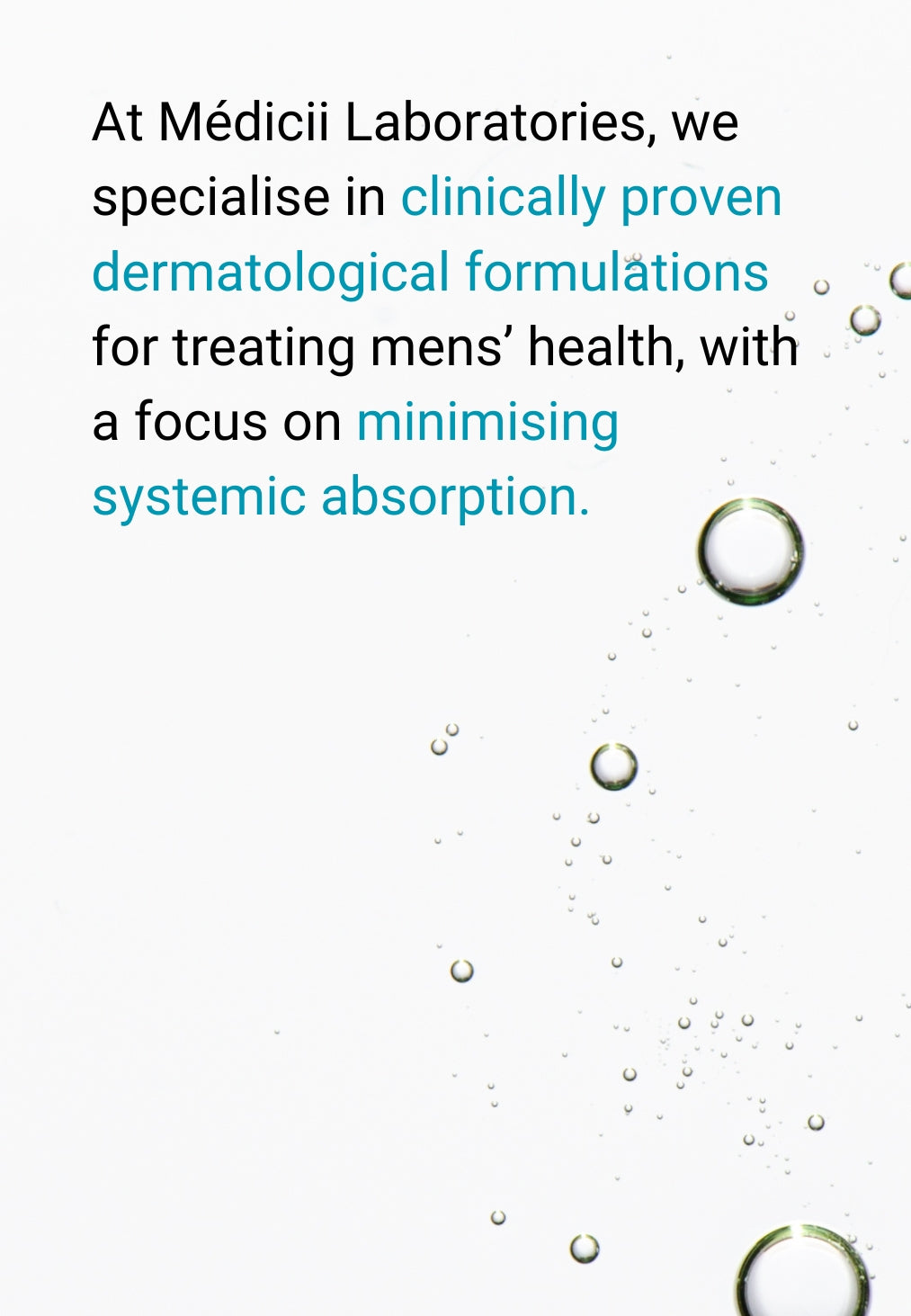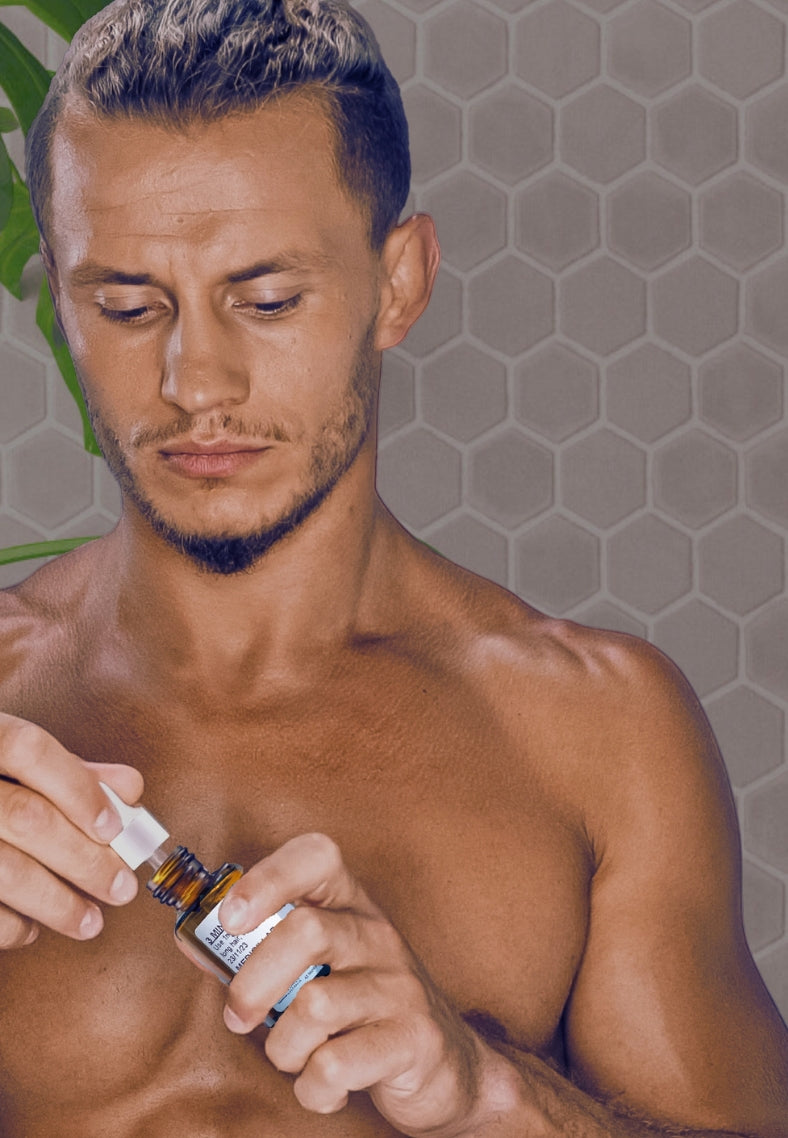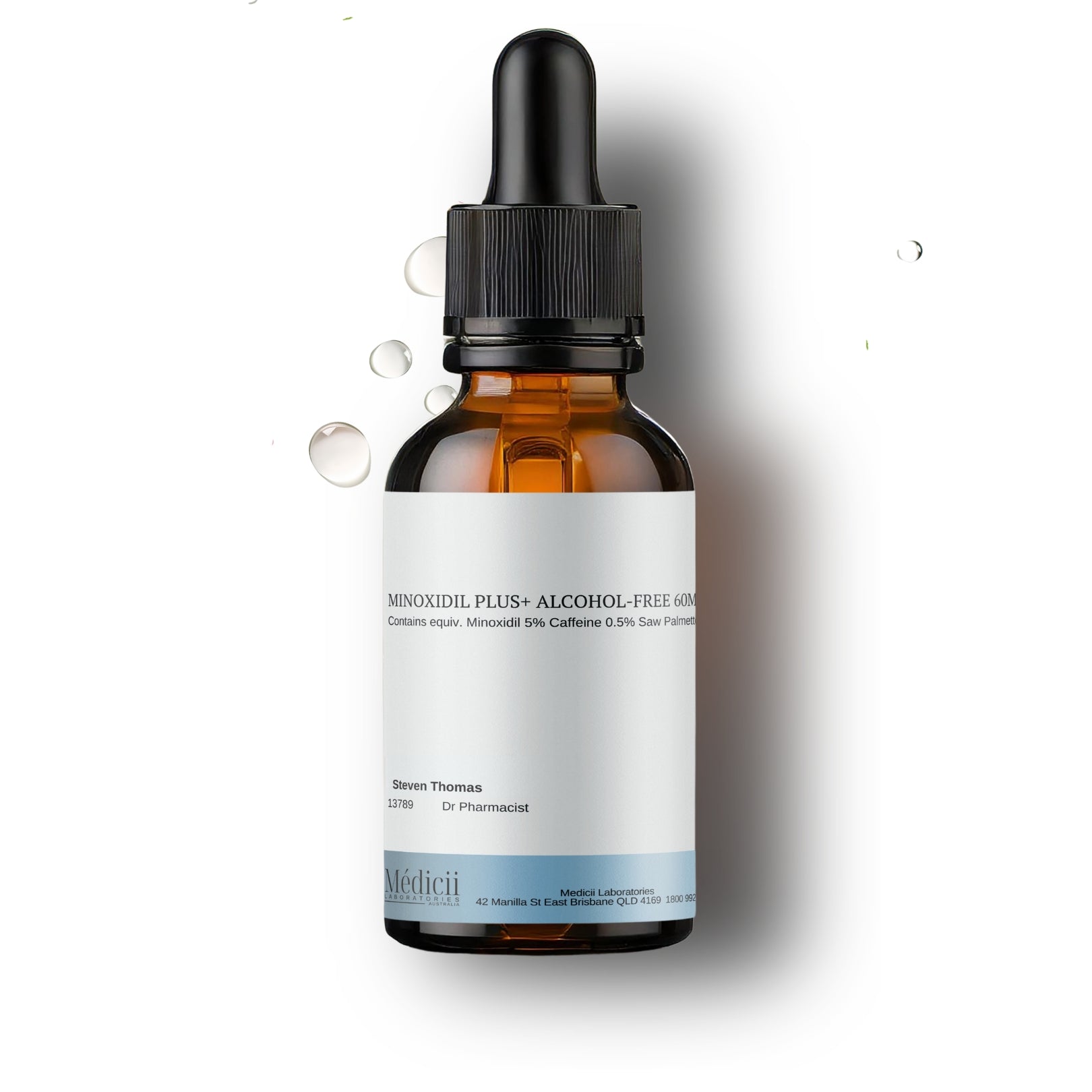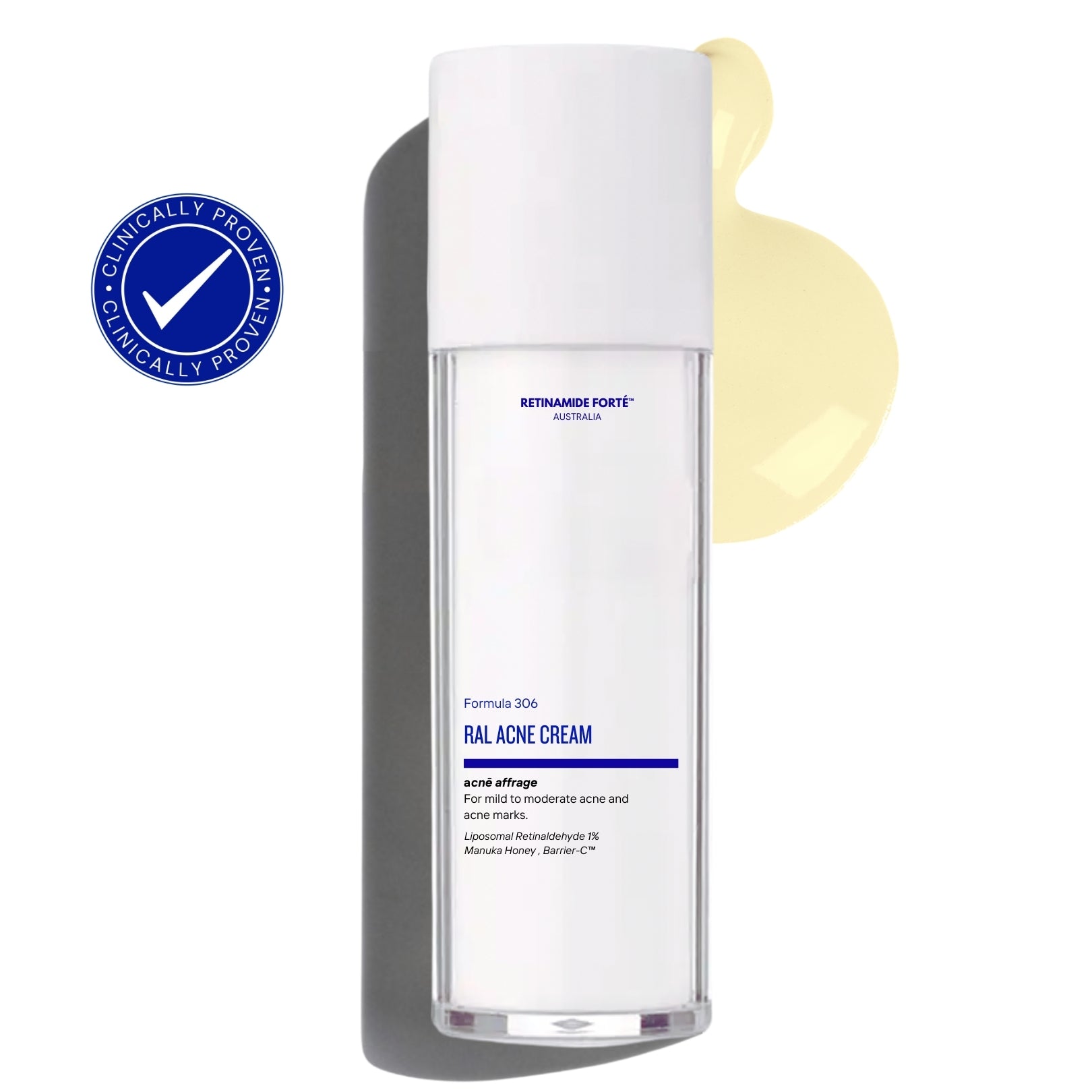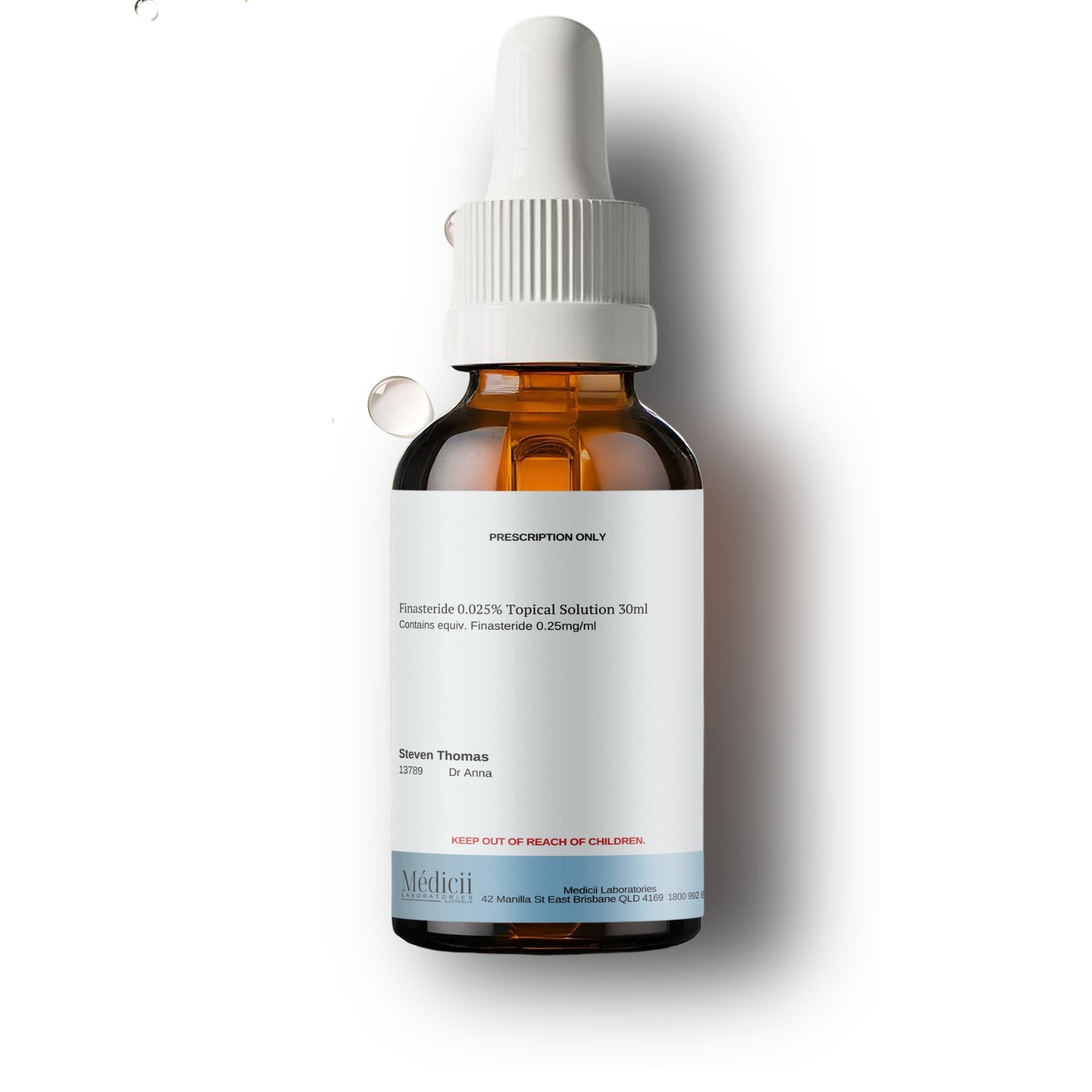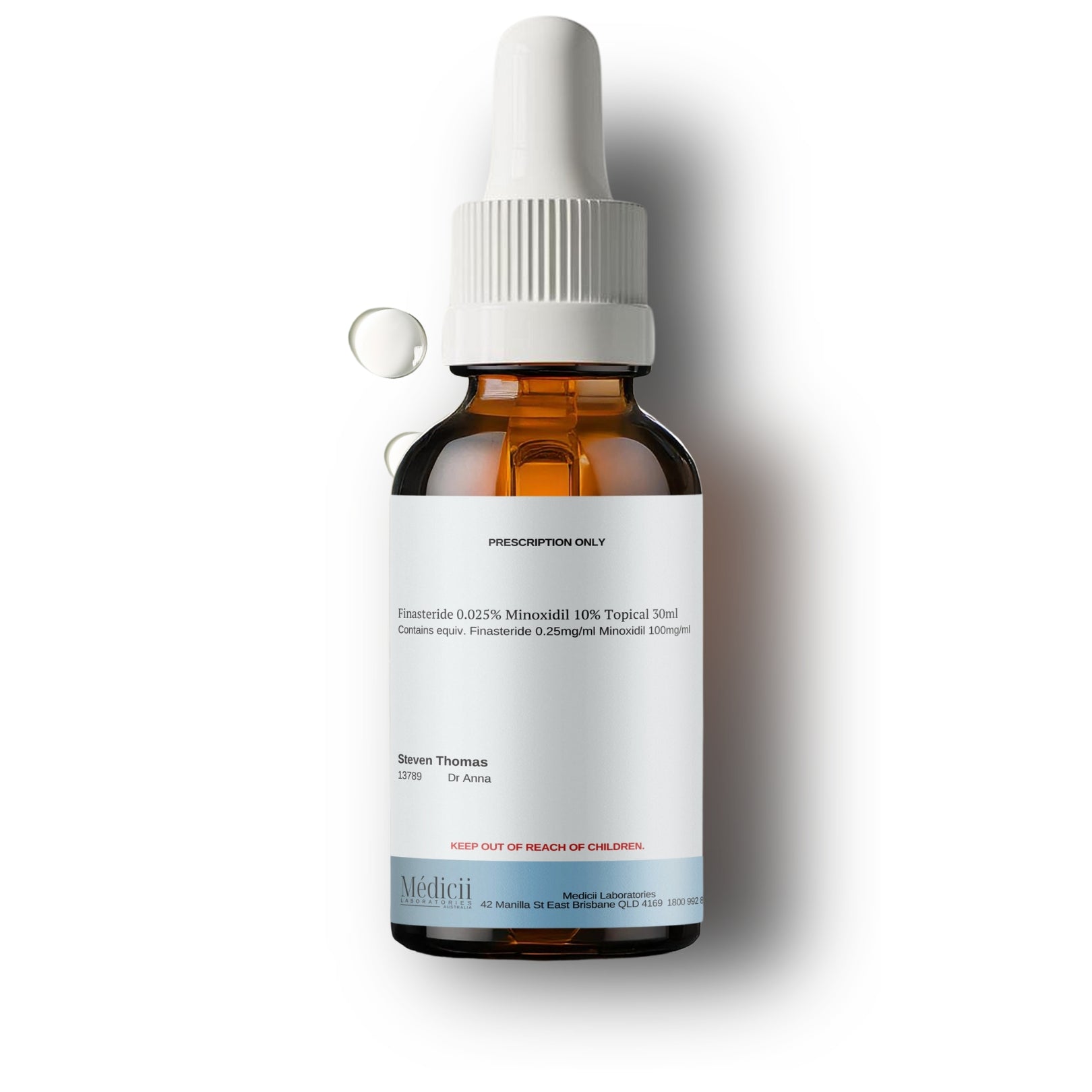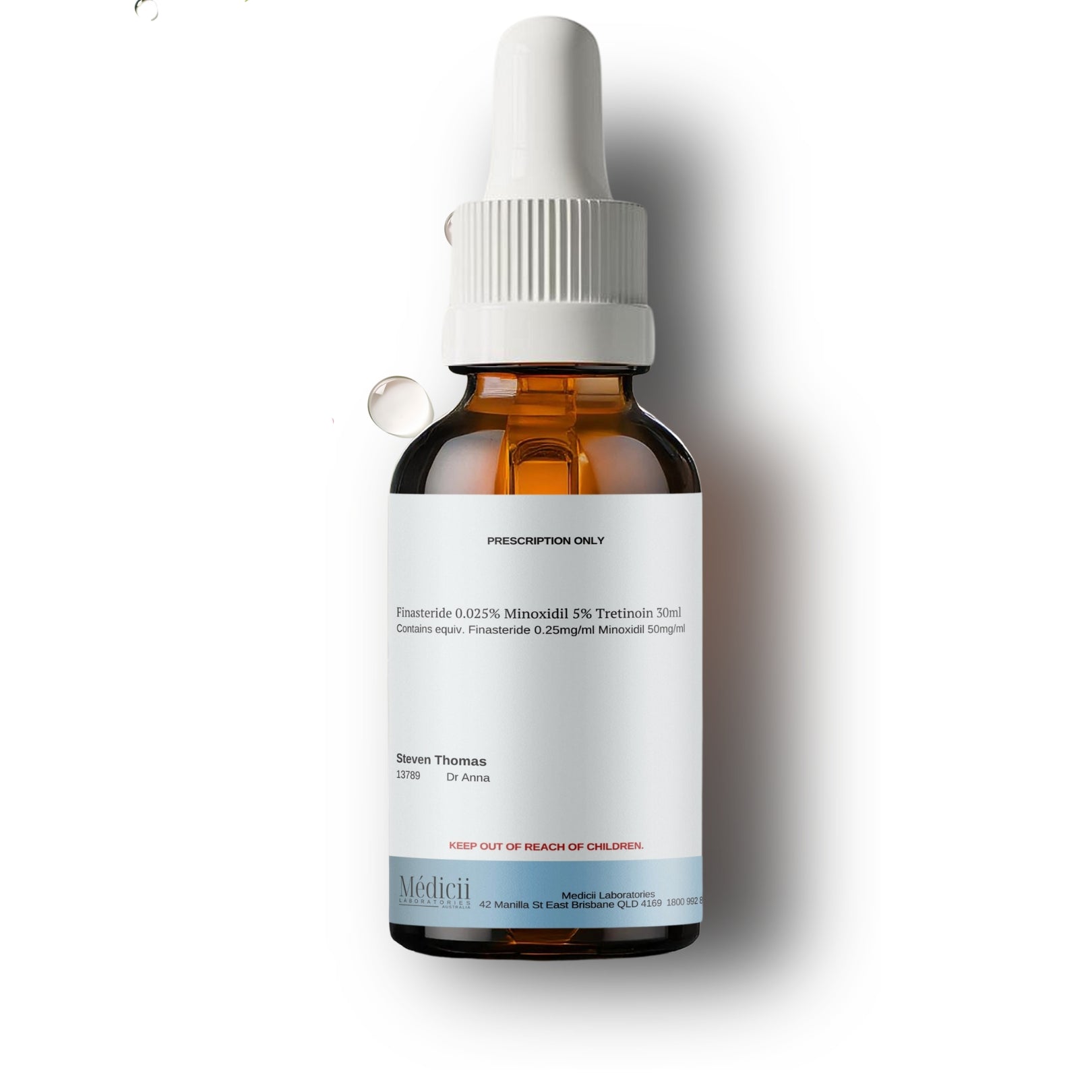Article: tretinoin and hair loss

tretinoin and hair loss
Tretinoin is known as the holy grail for glowing skin, the supreme ingredient that outshines all others when it comes to removing dead skin cells, minimising fine lines and lightening dark spots.
Lately, there are rumours this magical ingredient can also regrow hair. Is it really true?
This article will see what science has to say about tretinoin and hair loss.
What is Tretinoin?
Tretinoin is a Vitamin A derivative and is one of the most researched retinoid in dermatology for over half a century. Tretinoin was first FDA approved for the treatment of acne vulgaris in 1971 and then for photoaging in 1995.
The exact mechanism of Tretinoin (all trans retinoic acid) is not well understood but it is known to act on all three retinoic acid receptors. Once bound to these receptors, Tretinoin is known to have profound effects on:
- Stimulating new collagen production,
- Decreasing epidermal melanin,
- Inhibiting skin metalloproteinases (the enzyme that breaks down collagen),
- Reduce skin cells from sticking together and therefore the formation of comedones, and
- Increasing skin cell turnover.
Tretinoin and hair loss clinical Studies
The majority of studies completed so far compares Minoxidil vs Minoxidil + Tretinoin, not necessarily Tretinoin by itself. This is what we know so far about tretinoin and hair growth:
1. Tretinoin alone may regrow but because there are so few studies comparing tretinoin versus minoxidil, the evidence is not strong enough. One small study published by Bazzano in 1986 compared topical Tretinoin alone and in combination with 5% minoxidil in 56 subjects with androgenetic alopecia. After 1 year, the combination of topical Tretinoin with 5% Minoxidil resulted in terminal hair regrowth in 66% of the subjects studied compared to 58% in the Tretinoin only subjects.
2. Tretinoin can help reduce the dosing schedule. One notable study published by Shin in 2007 showed that combining Tretinoin 0.01% with Minoxidil 5% once daily showed similar results to using Minoxidil 5% twice a day.
3. Tretinoin can help non-responders to Minoxidil. Some studies suggest Tretinoin can help upregulate follicular sulfotransferase enzymes to enhance the effectiveness of minoxidil.
What are the side effects of Tretinoin for hair growth?
Before everyone goes requesting that Tretinoin should be added to their compounded mixture, here's what you need to know about the common side effects of topical tretinoin:
- Itching, stinging
- Flaky skin (tretinoin exfoliates the skin)
- Sun sensitivity
- Can cause colour discolouration on your pillows
- Skin dryness and peeling
Topical tretinoin is generally safe to use and has been used in dermatological preparations for more than half a century. Whilst not everyone will experience these side effects, they can occur and especially at higher dosages.
Is Tretinoin FDA approved or TGA approved for hair loss?
Tretinoin is not FDA approved or TGA approved for the management of hair loss.
What is the stability of Tretinoin in liquid formulations?
Tretinoin is an unstable ingredient, especially in liquid solutions. Hence, you will only find tretinoin creams and gels available commercially due to their more favourable longer shelf life. They trade under the brands Retrieve and Stieve-A (Stieve-A is now discountinued in Australia).
Whilst pharmacists can find ways to maintain the stability of tretinoin in liquid solutions for a given period of time, its shelf life is nowhere as long as cream formulations.

